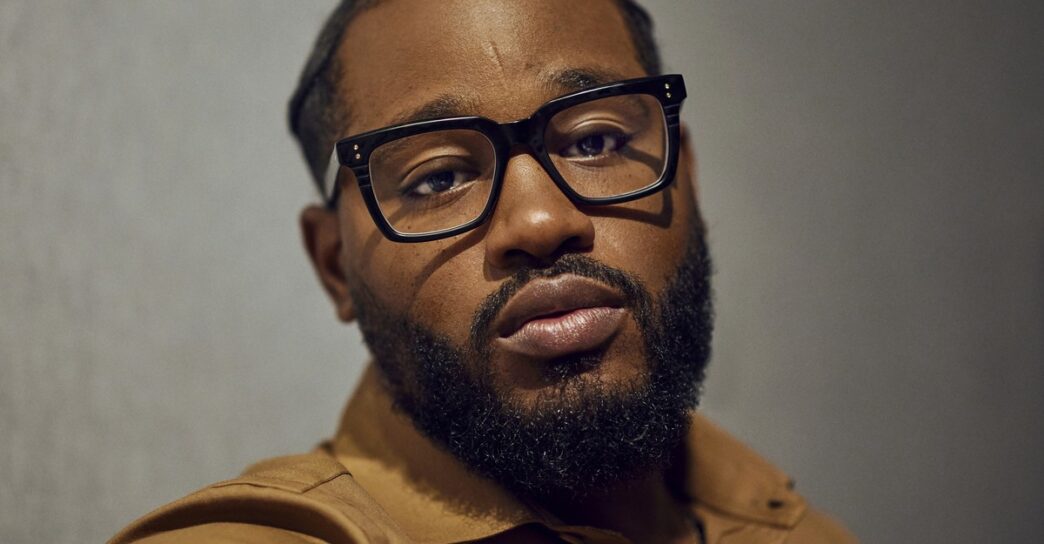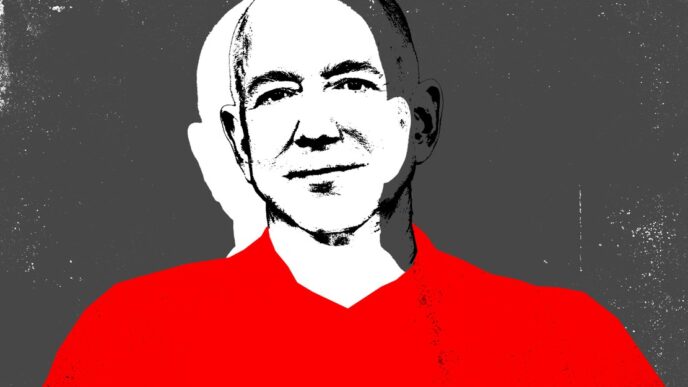Coogler, the writer-director of the new film Sinners, has made five movies in his 12-year career, all of them well-received hits. Fruitvale Station is a wrenching true-crime drama, while the film Creed dynamically reimagines the Rocky franchise. He is perhaps best-known, however, for Black Panther and its sequel, building a world that became a cultural phenomenon and a high-water mark for Marvel.
But Sinners is Coogler’s first entirely original work—a strange, heady piece of horror set in the Jim Crow Deep South over the course of a single evening. A pair of identical twins (both played by Michael B. Jordan) have returned home after years spent fighting in the German trenches and bootlegging in Chicago, only to be pitted against a coven of vampires. The film reimagines the time period as something seductively magical: when the blues that emerged from the Mississippi Delta was so culturally potent that it could even attract the attention of the undead.
Some theatergoers may be surprised by the concept, especially considering that Coogler’s previous film was the comic-book blockbuster Black Panther: Wakanda Forever. But the filmmaker sees the monsters as a perfect complement to the music, equating them to the seemingly disparate ingredients needed for a perfect recipe. “Gumbo is spicy,” he told me. “It’ll make your nose run if it’s done right. The vampire was always the spice. Gumbo has to hurt a little bit. If you serve me gumbo that doesn’t hurt a little bit, it’s not right.”
The resulting creation is exhilarating. I spoke with Coogler about how Sinners’ genre mash-up came to be, why it was the right time for him to tell an original story, and the reason the Mississippi setting resonated for him, despite his having never been there before working on the film.
This conversation has been edited for length and clarity.
David Sims: Sinners is the first movie I saw this year where I really felt alive in the theater.
Ryan Coogler: I’m going for that every time, man. But this one came from a place inside of myself I wasn’t sure existed.
Sims: Where is it coming from?
Coogler: The way I approach filmmaking is, I’m always conscious of the place and what its effects are on the characters, what its effects are on the story, what the characters’ effects are on the place. And I’ve been blessed to be able to make films about really awesome places. Wakanda is fictional, but Philadelphia and the East Bay area, and now Mississippi, the Delta specifically—these are mythic places, and I’ve always been fascinated with myth.
I had an uncle from Mississippi, and for a long time, he was the oldest male member of my family. He lived down the street from me, essentially, so I spent a lot of time with him. He had an outsized impact on my life.
Sims: Right.
Coogler: I felt very guilty when he passed away that I wasn’t there enough, and that pursuit of my dream took me away and robbed me of these experiences of being home. This film was a love letter to him and that exploration of the music that he was obsessed with.
I never expected to do research on this that meant something to my uncle, and realize that this music is maybe our country’s greatest homegrown contribution. I had no idea of the epic nature of what was made in this place at this time, that almost became a beacon of global communication—that became global pop culture. That was just flat-out astonishing, to think that these people that weren’t even considered full human beings by the state could make an art form that’s such a lightning rod.
Sims: Any popular music we listen to today, it goes back to the blues.
Coogler: To me, that was just fascinating. The whole time I was making this movie, I could feel my uncle and my cousins and my grandfather saying, “Hey, I told you so.” Every step of the way, bro.
Sims: The moment where everything locks in is a musical sequence when everyone is dancing, smack in the middle of the movie. We learn that the young blues musician Sammie Moore is such an entrancing performer that even vampires are drawn to him. In that sequence, people travel across time to dance along to Sammie’s music. It’s a beautiful scene that precedes the film’s turn toward horror. With it, you visually are demonstrating how the blues is a link in a chain that follows all the way to this day. Was that scene always there, or is that something you got to?
Coogler: It wasn’t even in my first draft. When I got to that moment of Sammie playing the blues, that’s when it hit me that I had to do this. I had to express, in a way that only film language can express, the monumental importance of what these people are doing and how it would reach through time.
Look, man: I’m giving people a satisfying experience in the cinema. I think it’s very important. Even more so today—people got all this stuff available to them at home. They leave their house; they get a babysitter; they get an Uber.
Sims: They’re spending a hundred bucks to see a movie.
Coogler: It’s an insane commitment in today’s climate. I know that all these characters that you’re going to meet are going to befall the supernatural thing, and I wanted to balance it by giving them a supernaturally positive thing—that is, the feeling of being in a place where they’re watching an extraordinary musical performance, and you’re surrounded by people who understand the context of that performance. That feeling is a human feeling. Everybody’s been there. But I wanted to show that with film language.

Sims: I feel like you’re making an ambitious play with Sinners. You’re not just sandwiching two movies together; you’re trying to think about: What would draw the supernatural here? What would be the beacon? Did you always have vampires—like Remmick, the leader of the undead—in the story?
Coogler: Yeah. It was always there, bro. Gumbo is spicy. It’ll make your nose run if it’s done right. The vampire was always the spice. Gumbo has to hurt a little bit. If you serve me gumbo that doesn’t hurt a little bit, it’s not right. The vampires were always there, because so much music deals with the supernatural. So much of it’s about being haunted by ghosts or dealing with supernatural creatures or having a rabbit’s foot or a mojo bag. It deals with darkness. It’s dealing with the id. And I love horror cinema; I love horror fiction and the concept of the vampire—everything about it made sense for this movie when I really started to think about it. The fact that they have perspective, that they’ve been around for a long time. When Remmick hears Sammie sing, he knows what that music is. He knows what it can do.
Sims: The viewer understands that the vampires want Sammie for a reason—they admire his talent, and they want to unlock a certain darkness. What’s rich about vampires, like you’re saying, is that they are literate and artistic. They’ve had so many life experiences.
Coogler: Vampires still have so much of their humanity left, their knowledge, and also they can present as something that’s not what they truly are. I had so much fun with these characters, in 1932, where there is no Dracula in mass production. There is no Twilight. They don’t know what they’re dealing with. It’s like, Hey, this is a white dude with a certain accent.
Sims: Were the twins always present in this story too?
Coogler: Yes, sir. I was really concerned with myth. A lot of these characters are named after blues songs or characters that are in movies, or they’re named after people from my life. And my mom has older sisters that are identical twins. I was born into a world where twins were a thing and a part of my life. I have to buy birthday cards for both my aunts and make sure they are different, even though they like the same things. They still to this day live right next door to each other. This extremely rare thing was a part of the fabric of my family.
I also have a paralyzing fear of doppelgängers. That’s the one thing that brings me to my knees in fear, if I ever encounter it in fiction or in life. People who know me, it’s almost like a practical joke that I’m making a movie about identical twins.
Sims: Because that’s the thing you’re afraid of.
Coogler: It’s related to the thing I’m afraid of. I thought that would add to the myth of these guys, if there’s almost like a supernatural quality to them that enables them to navigate war and Prohibition-era Chicago. The reason that they survive is because there’s two of them.
Sims: Everything you’ve worked on before this has been based upon existing material or a true story. But this movie feels like it’s coming right from you. Were you eager to just do your own thing versus working in a bigger ecosystem?
Coogler: I got afraid, bro. Because when you’re working with other things, there’s also something to hide behind a little bit. It takes quite a bit of the pressure off. And the reality is, you’re less exposed if somebody doesn’t like it. It might be because they don’t like boxing movies, or they don’t like comic books, or they had an issue with the superhero suit or whatever. There’s a barrier there for somebody.
I’ve been engaged with audiences in this medium for over a decade now, and I still hadn’t engaged fully. I didn’t want to get caught up in the comfort of not being fully exposed. I didn’t want to look back at myself and say, “Man, I was chickenshit.” So I went for it with this one, and convinced some of my greatest collaborators to come with me. Everybody is at a point in their lives where things are changing; the kids are getting older; we’re getting older. Life is getting more complicated. People are getting directing offers. And I realized it’s now or never for this, and that was why we went when we went.
Sims: Is this the kind of movie you want to keep making? Or would you be excited to dip back into franchise films?
Coogler: The thing is, not everybody can do this, so I feel a responsibility too. Yeah, I hope to make another Panther movie, but the people who I look up to the most as filmmakers, they do this. They make original movies on a massive scale. And I think that each time they do it, they push the medium forward—if the audience decides they like the movie, and they decide that there’s a place for me in those ranks.
Sims: It’s not like the movie industry’s going away, but it is tougher now to get a studio’s attention without some piece of intellectual property or familiar brand name attached. Yet even when you made Black Panther, there were plenty of people in the film business who were like, A movie with a predominantly Black cast will never work overseas. That belief got dispelled the minute that the movie came out and people went to see it. That’s all it takes.
Coogler: That brings this full circle—like, the music made by a Black sharecropper with a guitar. How am I going to take that to Sweden? [Laughs.] But there you have it. Everything you’re saying is true, and I believe in the value of the media. I don’t think it goes away. I pray it doesn’t. I love walking into a dark room with a bunch of strangers and a trailer rolling. The movie starts, and shit gets weird, and you hear people react to it. I love that feeling.
Sims: What movies were you thinking of when you were putting Sinners together? I obviously thought of the director Robert Rodriguez’s From Dusk Till Dawn because of the vampires but also because of the storytelling: The film is going to flip a switch halfway through, and the audience won’t quite see that coming.
Coogler: Robert Rodriguez is a big hero of mine; same with his collaborator in that movie, Quentin Tarantino. It’s a 24-hour movie. He was inspired by Spike Lee, and I think about the 24-hour movie that Spike mastered with Do the Right Thing. To me, Dusk Till Dawn is also that. It’s in the tradition of the 24-hour movie that I was trying to do with Fruitvale Station. Start in one morning; end in the next morning. I’m also influenced greatly by another one of Rodriguez’s movies, called The Faculty.
Sims: I love that movie.
Coogler: How he combined Invasion of the Body Snatchers and The Thing and set it in a 1990s high school—the mash-up of setting in movies. Another influence on this movie was a movie called Inside Llewyn Davis, and its treatment of music. And also, No Country for Old Men. The Small Axe film, Lovers Rock—how it shows a house party coming together, and how the whole world can be contained in those four walls. But the biggest influence in terms of film language, I would say, is a Twilight Zone episode called “The Last Rites of Jeff Myrtlebank,” and how that episode explored how a small town deals with something supernatural.
The biggest narrative influence on the film is Salem’s Lot, the great Stephen King novel. I haven’t seen the show or the movie, but I read that book, and it blew my mind—how you get caught up in the workings of this town and how they’re treating each other. And all of a sudden, Dracula shows up. That never left my consciousness. So that’s the biggest influence on this one. I wanted it to feel like a great blues record. I wanted it to feel like you were reading Salem’s Lot while listening to the best blues record.
Sims: I love it.
Coogler: Eating a bowl of spicy gumbo.














